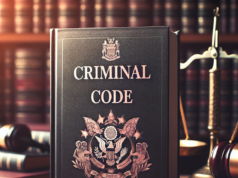The criminal justice system is often perceived through a lens of punishment, but an essential component of this system is the focus on rehabilitation and reintegration. Parole and probation serve as critical mechanisms that allow offenders to transition back into society while maintaining a level of supervision. However, the nuances of these two concepts are frequently misunderstood, leading to misconceptions about their implications for offenders and society. This article delves into the hidden truths of parole and probation, exploring their distinctions, processes, impacts, and the societal perceptions that shape them.
Understanding the Distinction: Parole vs. Probation in the Criminal Justice System
Parole and probation are two distinct forms of supervised release that serve different purposes within the criminal justice system. Parole is granted after an individual has served a portion of their prison sentence, allowing them to complete the remainder of their term under supervision in the community. Conversely, probation is a sentencing alternative that allows offenders to serve their time in the community rather than in prison, often as a result of a plea bargain or a judge’s discretion. While both involve supervision and compliance with certain conditions, the key difference lies in their timing and context: parole follows incarceration, whereas probation is an alternative to it. Understanding these distinctions is crucial for grasping the broader implications of these forms of supervision on offenders’ lives and societal reintegration.
The Parole Process: Eligibility, Hearings, and Decision-Making Factors
The parole process is multifaceted, involving several stages that determine an offender’s eligibility for release. Generally, inmates become eligible for parole after serving a specified portion of their sentence, often influenced by factors such as good behavior and participation in rehabilitation programs. Parole hearings are conducted by a board that evaluates various elements, including the nature of the crime, the offender’s behavior while incarcerated, and their plans for reintegration into society. Decision-making factors also encompass input from victims, community members, and parole officers, all of which contribute to a comprehensive assessment of the offender’s readiness for release. This process aims to balance public safety concerns with the potential for rehabilitation, reflecting the complexities of managing offenders’ transitions back into society.
Probation Supervision: Roles, Responsibilities, and Challenges Faced by Officers
Probation officers play a pivotal role in the supervision of individuals placed on probation, tasked with ensuring compliance with court-ordered conditions while facilitating rehabilitation. Their responsibilities encompass regular check-ins, drug testing, and monitoring of employment and housing situations. Additionally, probation officers often serve as counselors and advocates, connecting probationers with necessary resources, such as mental health services or job training programs. However, these officers face significant challenges, including high caseloads, limited resources, and the need to balance enforcement with support. The effectiveness of probation supervision is often contingent upon the officer’s ability to build rapport with probationers, fostering an environment conducive to rehabilitation while maintaining accountability.
The Impact of Parole and Probation on Recidivism Rates: Analyzing the Data
Research indicates that both parole and probation can significantly influence recidivism rates among offenders. Studies have shown that individuals who successfully complete parole or probation are less likely to reoffend compared to those who do not receive any form of supervision. Factors contributing to this trend include the structured support provided by parole and probation officers, access to rehabilitation programs, and the accountability that comes with supervision. However, the effectiveness of these systems can vary widely based on individual circumstances, such as the nature of the offense, the availability of community resources, and the level of support from family and friends. Understanding these dynamics is essential for policymakers aiming to reduce recidivism and improve outcomes for offenders reintegrating into society.
The Role of Rehabilitation Programs in Successful Reentry for Offenders
Rehabilitation programs are integral to the success of parole and probation, offering offenders the tools and support necessary for successful reintegration into society. These programs may include substance abuse treatment, vocational training, educational opportunities, and mental health services, all designed to address the underlying issues that contribute to criminal behavior. Research has consistently shown that participation in rehabilitation programs can lead to lower recidivism rates and improved life outcomes for offenders. However, access to these programs can be inconsistent, often influenced by geographic location, funding availability, and systemic barriers. As such, enhancing the availability and quality of rehabilitation programs is critical for ensuring that parolees and probationers have the resources they need to thrive post-release.
Addressing the Stigmas: Public Perception and Policy Implications for Parolees and Probationers
Public perception of parolees and probationers is often fraught with stigma, which can hinder their reintegration into society. Many individuals view those on parole or probation as dangerous or untrustworthy, leading to discrimination in employment, housing, and social relationships. This stigma not only affects the mental health and self-esteem of offenders but also poses significant barriers to their successful reentry. Policymakers and advocates are increasingly recognizing the need to address these perceptions through public education campaigns that highlight the importance of rehabilitation and the potential for change. By fostering a more supportive environment for parolees and probationers, society can contribute to lower recidivism rates and promote public safety, ultimately benefiting everyone.
The complexities of parole and probation reveal a dual narrative of accountability and opportunity within the criminal justice system. While these mechanisms are designed to supervise offenders and promote rehabilitation, they also face significant challenges and societal stigmas that can impede their effectiveness. As we continue to explore the hidden truths of parole and probation, it becomes evident that a balanced approach—one that emphasizes rehabilitation, community support, and public education—is essential for fostering successful reintegration and reducing recidivism. By understanding and addressing the intricacies of these systems, we can work towards a more just and rehabilitative society.































